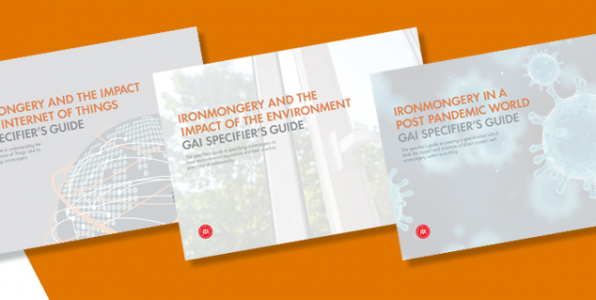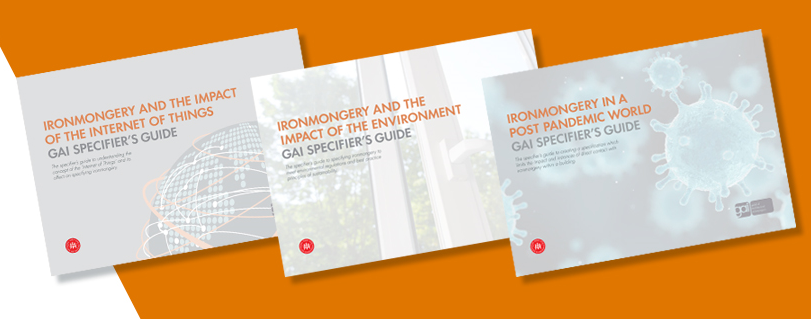New guides launched to help specifiers navigate current industry issues

New guides launched to help specifiers navigate current industry issues

Three new guides have been published to make specifiers aware of the additional hardware considerations that are needed for projects with additional hygiene, sustainability and connectivity requirements.
The new guides have been launched by the Guild of Architectural Ironmongers (GAI) to ensure that anyone involved in the specification of architectural ironmongery has access to the latest best practice advice and is working in line with current standards.
Based on the RIBA-approved CPD presentations created by the GAI, each guide contains comprehensive product information, diagrams and detail on the relevant building regulations and industry standards. All of the guides are available to download free of charge from the GAI website.
The ‘Ironmongery specification in a post-pandemic world’ specifier’s guide outlines the different types of hardware that can be introduced into buildings to help minimise contact with surfaces without compromising safety or security.
It provides details on specialist closing devices, door automation, access control and anti-microbial devices. It also looks at ancillary products that may be used in more specific areas, such as washrooms, and things to be aware of when retrofitting hardware.
Douglas Masterson, technical manager at the GAI, said:
“In a very short space of time, the buildings that we live, work and socialise in have changed dramatically. Even before the pandemic, emphasis on a more sustainable supply chain and advances in technology have transformed the way we enter and move around buildings.
“Specifiers need to keep up to date with the latest guidance and continue to be responsive to wider changes to ensure that the door and window hardware being chosen for a project will provide building users with safe and accessible routes through a building.�
New hardware innovations for smart homes and smart buildings are the focus of the ‘Ironmongery and the impact of the Internet of Things’ specifier’s guide.
It looks at how the rise of interrelated technology is affecting the ironmongery industry, including various smart locking and access control products. The guide includes details on building information modelling (BIM) and how it can benefit projects, as well as the relevant standards that apply to the Internet of Things (IoT), including the BSI Kitemark Scheme for IoT devices that launched in May 2018.
It also covers the integration of these smart products with building management systems, as well as the potential impact of future trends in technology and legislation.
The ‘Ironmongery and the impact of the environment’ specifier’s guide is designed to highlight the environmental impact of construction products, including door hardware. It covers how architectural ironmongers can help to reduce carbon emissions from buildings as well as how they can change their own processes to reduce their effect on the environment.
It covers industry initiatives and programmes including the UK Green Building Council (UKGBC) activities, building certification schemes such as BREEAM and LEED, as well as ISO 14001 and other relevant environmental standards. It also discusses the role of Environmental Product Declarations (EPDs) and how these relate to architectural ironmongery specifically.
The GAI now has eight Specifier’s Guides in total covering fire and escape doors, specialist applications, accessibility, security and access control. To download the guides for free, visit www.gai.org.uk/GAISpecGuides
Comments are closed